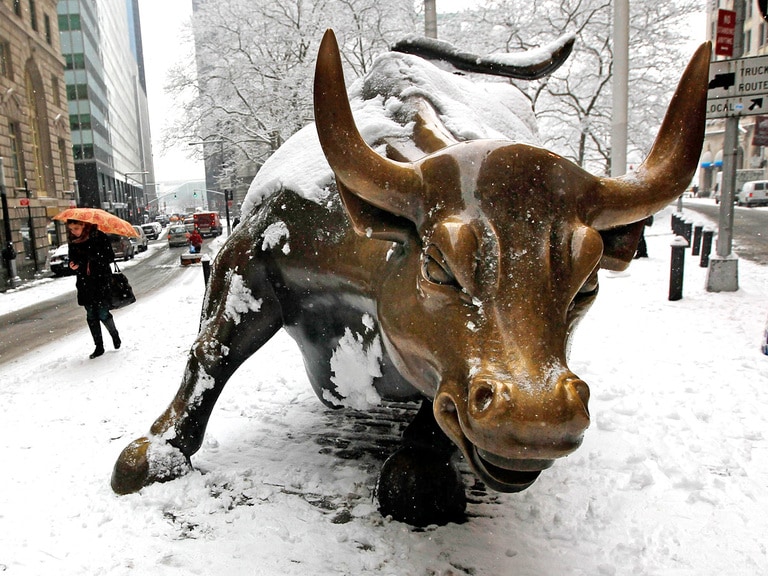In June, the Nasdaq Composite Index [IXIC] made waves when it peaked over 10,000 for the first time. Just two weeks later, the Nasdaq hit another major milestone — reaching an intraday high of 10,221.85 and closing at 10,131.37 (up 11.42% in the year-to-date) on 23 June.
The rally represented the most considerable advantage in the Nasdaq’s performance over the S&P 500 [SNP] and the Dow Jones index [DJI] since 1983, which were respectively down 3.1% and 8.3% YTD.
What factors have contributed to the Nasdaq’s show of strength and continue to push it far ahead of the S&P 500 and Dow Jones index?
11.42%
Nasdaq's YTD price rise
Stay at home vs blue-chip
A significant factor in the Nasdaq index’s surge is that investors are now rallying behind the big tech and stay-at-home stocks benefitting from the pandemic, particularly in the e-commerce, cloud computing and communications sectors. A few of these stocks are having a positive impact on the S&P 500 as well as the Nasdaq, which explains its slightly better performance compared to the Dow Jones.
Up to 29 June, Apple [AAPL], Amazon [AMZN], Alphabet [GOOG], Facebook [FB] and Microsoft [MS] had seen their share prices increase by an average of 21.18% in the year-to-date. These stocks account for 40% of the Nasdaq index’s value, and 20% of the S&P 500. The Dow Jones, however, only features Apple and Microsoft among these stocks.
“While we have all become even more dependent on the products and services provided by the FAANGM’s during the Great Virus Crisis, they might have become more immune to government regulation,” said Ed Yardeni, president and chief investment strategist at Yardeni Research, in a note to clients. “They have great balance sheets and generate lots of cash flow.”
“While we have all become even more dependent on the products and services provided by the FAANGM’s during the Great Virus Crisis, they might have become more immune to government regulation” - Ed Yardeni, president and chief investment strategist at Yardeni Research
However, as well as pushing tech stocks, COVID-19 has introduced uncertainty and volatility to all markets and industries — keeping indices like the Dow Jones grounded.
For starters, economic instability and fears over a second wave of cases have caused many blue-chip companies, including Walmart [WMT], McDonald’s [MCD] and Caterpillar [CAT] (all listed in the Dow Jones) to pull their 2020 guidance — making stocks challenging to value.
“Although economic data have improved in recent weeks, many investors expect the recovery to remain uneven and they are bracing for more turbulence as the presidential election season ramps up,” reported The Wall Street Journal.
“Although economic data have improved in recent weeks, many investors expect the recovery to remain uneven and they are bracing for more turbulence as the presidential election season ramps up” - The Wall Street Journal
Alongside a lack of insight and confusion, there’s an endless number of factors impacting the industries covered by the 30 constituents that make up the Dow Jones Index. Could it be that all that’s stopped the S&P 500 from sinking to the same depths is its wider coverage?
Boeing [BA], for example, which is listed on both indices, is down 45% YTD up to 6 July. Its operations continue to be hampered by COVID-19 and the grounding of its 737 MAX. This severely knocked the Dow Jones, counteracting the gains made by Apple and Microsoft, whereas for the S&P 500 this was offset by the likes of Amazon, which is up over 61% YTD and not featured in the Dow Jones.
The analysts’ outlook
Uncertainty and confusion are clouding analysts’ predictions. Jason Goepfert, head of SentimentTrader and founder of Sundial Capital Research suggests that this year is proving to be one of the most difficult ever to forecast, according to MarketWatch.
Meanwhile, current sentiment suggests the Nasdaq will continue to prosper as long as COVID-19 remains a threat.
“The second half of 2020 is expected to keep facing the brunt of the coronavirus pandemic as the second wave of the outbreak is gathering steam,” wrote Zacks analyst Sweta Jaiswal.
“In the current scenario, the rising work-from-home and online shopping trend, increasing digital payments, growing video streaming and soaring video game sales are slowly becoming the ‘new normal’. With the new trends making way, these major technology stocks are expected to continue to gain on rising demand for their products and services.”
“The second half of 2020 is expected to keep facing the brunt of the coronavirus pandemic as the second wave of the outbreak is gathering steam... With the new trends making way, these major technology stocks are expected to continue to gain on rising demand for their products and services” - Zacks analyst Sweta Jaiswal
This might well ring true for many but Susan Schmidt, head of US equities at Aviva Investors, suggests investors spread their bets. “You really need to triangulate across the three different indexes,” she told the Wall Street Journal. “You can’t depend on any one index, consider all three of them and know what’s in them.”
Disclaimer Past performance is not a reliable indicator of future results.
CMC Markets is an execution-only service provider. The material (whether or not it states any opinions) is for general information purposes only, and does not take into account your personal circumstances or objectives. Nothing in this material is (or should be considered to be) financial, investment or other advice on which reliance should be placed. No opinion given in the material constitutes a recommendation by CMC Markets or the author that any particular investment, security, transaction or investment strategy is suitable for any specific person.
The material has not been prepared in accordance with legal requirements designed to promote the independence of investment research. Although we are not specifically prevented from dealing before providing this material, we do not seek to take advantage of the material prior to its dissemination.
CMC Markets does not endorse or offer opinion on the trading strategies used by the author. Their trading strategies do not guarantee any return and CMC Markets shall not be held responsible for any loss that you may incur, either directly or indirectly, arising from any investment based on any information contained herein.
*Tax treatment depends on individual circumstances and can change or may differ in a jurisdiction other than the UK.
Continue reading for FREE
- Includes free newsletter updates, unsubscribe anytime. Privacy policy





